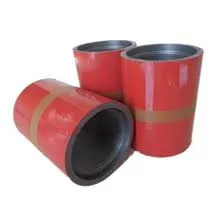2 月 . 12, 2025 09:57
Back to list
what are the differences between casing and tubing?
In the realm of oil and gas drilling, understanding the distinctions between casing and tubing is crucial for optimizing well performance and ensuring operational safety. Both play pivotal roles in the extraction process, but their functions, specifications, and applications vary significantly. This article delves into the core differences between casing and tubing, offering insights grounded in industry expertise and firsthand operational experience.
Operational deployment of casing and tubing also exhibits distinctive methodologies. Casing is run and cemented during various phases of drilling, classified into surface casing, intermediate casing, production casing, and sometimes additional conductor casing based on well depth and environmental conditions. Each layer is tailored to the stage of drilling, intended to incrementally protect and progressively deepen access to the reservoir. Tubing, introduced during the completion stage, is paramount for the production phase. It connects directly to the surface collection systems. Operators often utilize advanced completion techniques, including multiple tubing strings or utilizing corrosion-resistant alloys, to maximize recovery and prolong the operational lifespan of the well. The choice between different types of casing or tubing depends on site-specific requirements and economic considerations. Longevity, regulatory compliance, and environmental protection are at the forefront of these decisions, making the selection process critical to minimizing risk and optimizing resource extraction. In summary, understanding the distinction between casing and tubing involves recognizing their specific roles, the engineering standards they must meet, and their deployment strategies. Casing provides structural support and environmental safeguarding, while tubing serves the production phase's operational needs. For industry professionals, this knowledge is not only foundational but vital to ensure efficient, safe, and successful hydrocarbon recovery operations.


Operational deployment of casing and tubing also exhibits distinctive methodologies. Casing is run and cemented during various phases of drilling, classified into surface casing, intermediate casing, production casing, and sometimes additional conductor casing based on well depth and environmental conditions. Each layer is tailored to the stage of drilling, intended to incrementally protect and progressively deepen access to the reservoir. Tubing, introduced during the completion stage, is paramount for the production phase. It connects directly to the surface collection systems. Operators often utilize advanced completion techniques, including multiple tubing strings or utilizing corrosion-resistant alloys, to maximize recovery and prolong the operational lifespan of the well. The choice between different types of casing or tubing depends on site-specific requirements and economic considerations. Longevity, regulatory compliance, and environmental protection are at the forefront of these decisions, making the selection process critical to minimizing risk and optimizing resource extraction. In summary, understanding the distinction between casing and tubing involves recognizing their specific roles, the engineering standards they must meet, and their deployment strategies. Casing provides structural support and environmental safeguarding, while tubing serves the production phase's operational needs. For industry professionals, this knowledge is not only foundational but vital to ensure efficient, safe, and successful hydrocarbon recovery operations.
Latest news
-
Unlock the Benefits of Pup Joints for Your OperationsNewsOct.31,2024
-
The Quality of Casing Couplings from ChinaNewsOct.31,2024
-
The Essential Role of Pup Joints in Drilling OperationsNewsOct.31,2024
-
The Benefits of Tubing Couplings for Your ProjectsNewsOct.31,2024
-
Enhance Your Drilling Operations with Tubing Pup JointsNewsOct.31,2024
-
Elevate Your Drilling Operations with Tubing CrossoversNewsOct.31,2024
Related Products







